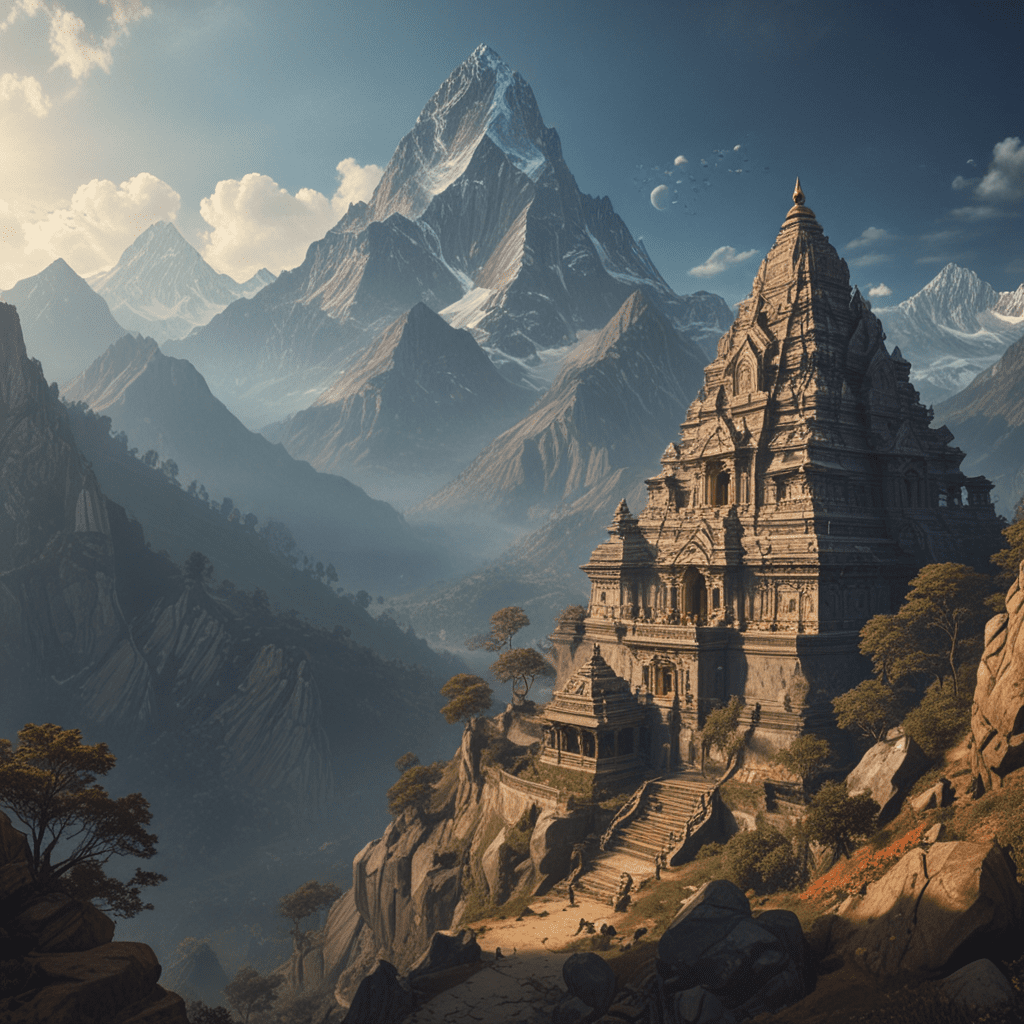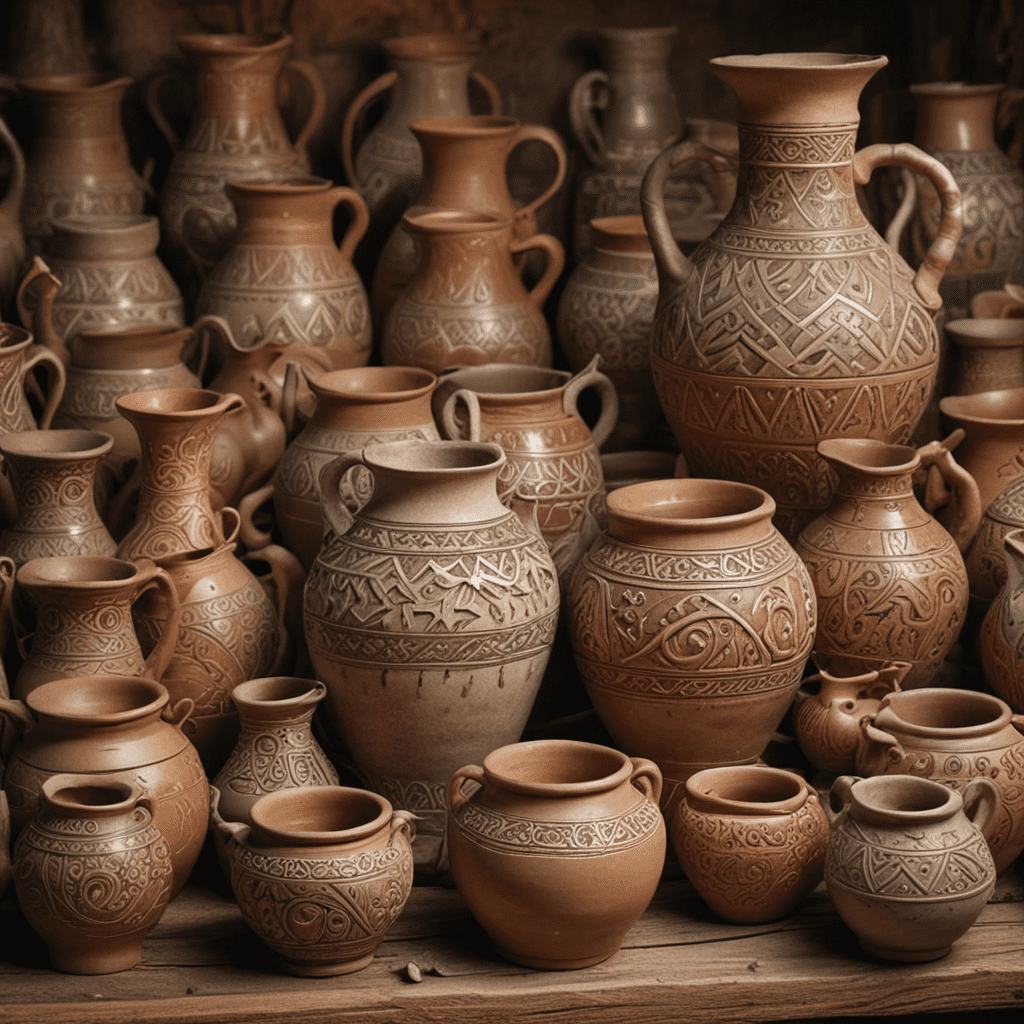Mount Kailash: The Abode of Shiva
Towering over the Tibetan Plateau, Mount Kailash stands as a sacred mountain in Hindu mythology. It is believed to be the abode of Lord Shiva, the god of destruction and transformation. The mountain is considered a pilgrimage site for Hindus, Jains, Buddhists, and Bon followers. Its four faces are said to represent the four directions, and its peak is believed to be the center of the universe.
Mount Meru: The Axis of the Universe
In Hindu mythology, Mount Meru is the mythical mountain that forms the axis of the universe. It is described as a golden mountain located at the center of the world. The mountain is said to be the abode of the gods and is believed to be the source of all rivers. It is also said to be the place where the churning of the ocean of milk took place, resulting in the creation of the fourteen precious gems and the nectar of immortality.
Mount Mandara: The Churning Stick of the Ocean of Milk
According to Hindu mythology, Mount Mandara was used as the churning stick when the gods and demons churned the ocean of milk. The churning resulted in the creation of the fourteen precious gems and the nectar of immortality. The mountain is said to be located in the center of the ocean and is described as being made of gold. It is also believed to be the abode of the celestial serpent Vasuki, who was used as the churning rope.
Mount Sumeru: The Floating Paradise
In Hindu mythology, Mount Sumeru is a mythical mountain that floats in the sky. It is described as a paradise where the gods reside. The mountain is said to be made of gold and is adorned with precious stones. It is also believed to be the abode of Kubera, the god of wealth. Mount Sumeru is often depicted in Hindu art as a conical-shaped mountain with a flat top.
Mount Vindhya: The Sacred Mountain of Central India
Mount Vindhya is a sacred mountain in Hindu mythology. It is located in central India and is considered to be the abode of the sage Agastya. The mountain is said to have been created by the god Vishnu to separate the north and south of India. It is also believed to be the place where the sage Narada performed his austerities. Mount Vindhya is a popular pilgrimage site for Hindus and is visited by thousands of devotees each year.
Mount Anjaneri: The Birthplace of Hanuman
Mount Anjaneri is a sacred mountain in Hindu mythology, located in southern India. It is believed to be the birthplace of Hanuman, the monkey god and a central figure in the epic Ramayana. The mountain is a popular pilgrimage site and is visited by thousands of devotees each year.
Mount Parasnath: The Abode of Bahubali
Mount Parasnath is a sacred mountain in Hindu mythology, located in eastern India. It is believed to be the abode of Bahubali, the son of the first Jain tirthankara Rishabhanatha. The mountain is a popular pilgrimage site for Jains and is visited by thousands of devotees each year.
Mount Arunachala: The Self-Manifestation of Shiva
Mount Arunachala is a sacred mountain in Hindu mythology, located in southern India. It is believed to be the self-manifestation of Lord Shiva and is a popular pilgrimage site for Hindus. The mountain is said to have the power to remove sins and bestow blessings on those who visit it.
Mount Pushkar: The Holy Lake and Pilgrimage Site
Mount Pushkar is a sacred mountain in Hindu mythology, located in western India. It is believed to be the abode of Lord Brahma and is a popular pilgrimage site for Hindus. The mountain is surrounded by a holy lake, which is said to have the power to cleanse sins and bestow blessings on those who bathe in it.
Mount Dhavalagiri: The White Mountain
Mount Dhavalagiri is a sacred mountain in Hindu mythology, located in Nepal. It is believed to be the abode of Lord Shiva and is a popular pilgrimage site for Hindus. The mountain is known for its white peak, which is said to represent the purity of Lord Shiva.



